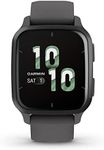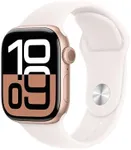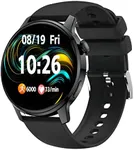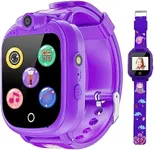Buying Guide for the Best Smart Watch Phone
Choosing the right smart watch phone can be a bit overwhelming given the variety of options available. A smart watch phone combines the functionalities of a smartwatch and a phone, allowing you to make calls, send messages, track fitness activities, and more, all from your wrist. To make the best choice, you need to consider several key specifications that will determine how well the device meets your needs. Here are the most important specs to look at and how to navigate them.DisplayThe display is the screen of the smart watch phone where you interact with the device. It is important because it affects how easily you can read and use the watch. Displays come in different types such as LCD, OLED, and AMOLED. LCDs are generally cheaper and offer good visibility in bright light, while OLED and AMOLED displays provide better color and contrast but can be more expensive. If you plan to use your watch outdoors frequently, consider a display with good brightness and visibility.
Battery LifeBattery life determines how long your smart watch phone can operate before needing a recharge. This is crucial because it affects how often you need to charge your device. Battery life can range from a day to several days depending on usage and the watch's features. If you use your watch for fitness tracking, GPS, and frequent notifications, you might need a watch with longer battery life. For casual use, a shorter battery life might be sufficient.
ConnectivityConnectivity refers to how the smart watch phone connects to other devices and networks. Common connectivity options include Bluetooth, Wi-Fi, and cellular (4G/5G). Bluetooth is essential for pairing with your smartphone, while Wi-Fi allows for internet access without a phone. Cellular connectivity enables the watch to function independently of your phone, making calls and sending messages directly. If you want to use your watch without always having your phone nearby, consider a model with cellular connectivity.
Fitness TrackingFitness tracking features monitor your physical activities and health metrics such as steps, heart rate, sleep, and more. These features are important for users who want to keep track of their fitness and health goals. Basic models may offer step counting and heart rate monitoring, while advanced models can track various exercises, sleep patterns, and even provide ECG readings. Choose a watch with the fitness tracking capabilities that match your health and fitness needs.
Operating SystemThe operating system (OS) is the software that runs on the smart watch phone. It affects the user interface, app compatibility, and overall user experience. Common OS options include Wear OS, watchOS, and proprietary systems from various manufacturers. Wear OS is compatible with Android devices, while watchOS is designed for Apple products. Proprietary systems may offer unique features but can be limited in app availability. Choose an OS that is compatible with your smartphone and offers the apps and features you need.
DurabilityDurability refers to how well the smart watch phone can withstand wear and tear, including water resistance and ruggedness. This is important if you plan to use your watch in various environments or during physical activities. Look for watches with water resistance ratings (e.g., IP68) and durable materials like stainless steel or reinforced plastic. If you are active or work in harsh conditions, a more durable watch will be beneficial.
Storage and MemoryStorage and memory determine how much data and how many apps your smart watch phone can hold and how smoothly it operates. More storage allows you to keep more apps, music, and data on your watch, while more memory (RAM) ensures better performance and multitasking. Basic models may have limited storage and memory, suitable for simple tasks, while advanced models offer more capacity for apps and media. Consider your usage needs when choosing storage and memory specifications.
![Apple Watch SE (2nd Gen) [GPS 40mm]](https://images-proxy.bestreviews.guide/p8YQHiMDV_v8vRKUxkVOI0zx7WM=/0x150/https://m.media-amazon.com/images/I/316IR-VGDlL._AC_CX679_.jpg)



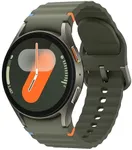
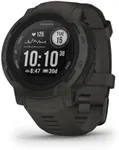

![Apple Watch Series 9 [GPS 41mm] Sma](https://images-proxy.bestreviews.guide/ZyIK8eIVoGZPhJzoOKET4KiyOxo=/0x150/https://m.media-amazon.com/images/I/41d6YTpzKWL._AC_CX679_.jpg)
